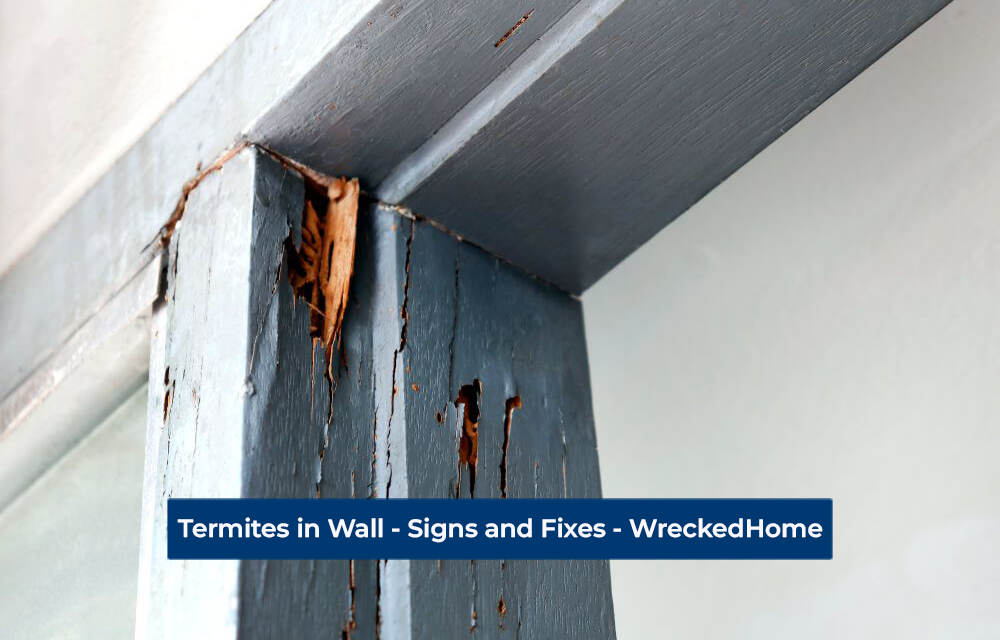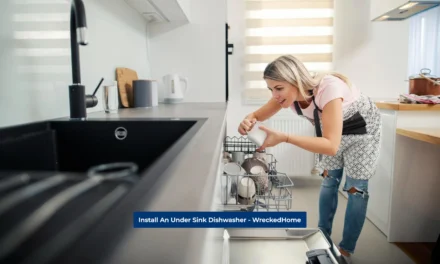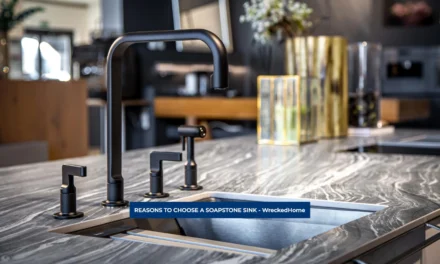Termites in wall are tiny insects that are also known as “silent destroyers” for their undetected presence in houses. They silently make colonies in the walls, wood and flooring. They cause more than 5 billion dollars in damage to the properties a year. Homeowners spend millions of dollars to get rid of them. If you suspect the presence of termites at your residence, then there is no better time. Learn about the signs of termites in walls, and learn how you can fix them without exploding your budget.
This detailed guide about termites in wall will cover everything starting from different types of termites, key signs indicating their presence, and their solutions. So, without any further delay, let’s get started.
Types of Termites in Wall
There are different types of termites that can cause property damage and making walls unsightly. Here are the two most common species:
1. Subterranean Termites
Subterranean termites are small, creamy white insects that make large colonies and are highly dependent on moisture. They live in underground colonies and build mud tunnels to assess the wood. Subterranean termites are way too damaging that they constantly eat wood (24 hours a day, 7 days a week) and may cause total collapse of the building.
2. Drywood Termites
Drywood termites are creamy white to light brown with a long, narrow and oval shaped body. These termites are also damaging to the house infrastructure, but they do not require contact with the soil. They thrive on hard, dry wood and can also infest wooden furniture.
Signs of Termites in Wall
After learning about the features of deadly dangerous termites, now is the time to learn the physical signs of their presence. It is not mandatory to have all these mentioned signs at once. You need to assess the condition of your walls and see whether it is an indication of termites or not.
1. Visible termites: Termites in Wall
Visible termites are the first yet uncommon sign of termites’ presence in your house. They are tiny and barely visible; still, you can spot them with little effort. This is because termites are cryptic insects that avoid exposure to light and air. They live in colonies showing signs of their growth. Also, termites vary in size depending on their caste within the colony, as there are workers, soldiers, and swarms.
2. Termite droppings or Frass
The next most significant sign of termites in wall is termite droppings – also known as Frass.
Frass is actually the fecal pallets of termites that are dropped off the wall in a cluster. The frass resemble grains of sand or sawdust, so if you see such accumulations on the floor that mark it, you have termites in the house. Now, you may get confused about whether it is termite pallets or other insects like cockroaches. So always remember, termite frass is more uniform in size and shape and has different appearance compared to the feces of other insects. The color of frass also varies depending on the termite species and the type of wood they are feeding on.
3. Discarded wings after swarming
Discarded wings are a clear sign of a termite infestation at your residence. Swarming is a crucial event in termite’s life cycle where reproductive termites take a flight to the air to establish new colonies. After landing, they shed their wings, leaving behind small, translucent, and symmetrical pairs of wings near walls, doors or windows. These discarded wings indicate your house is under the influence of termites. Remember, these wings do not confirm active infestation but warn their landing in your home. You need to take considerable actions to get rid of them.
4. Pinholes in the wall
Termites make tiny holes like other pests like ants. You can see them as an indication of their infestation. These holes are usually visible in the walls and wood panels. Actually, termites create openings in walls as they tunnel through the food. These are entry and exit holes. Entry holes are small – no longer than a pencil lead. Exit holes are comparatively larger than entry holes.
5. Mud tubes: Termites in Wall
Seeing mud tubes in the house is a warning of termites’ entry. Termites dig underground to create mud tubes or tunnels that are typically about the diameter of a pencil. These tubes give termites a sheltered tunnel to travel between their underground nest and their food source, which is wooden components of the building.
In some cases, mud tubes are not a confirmation of active termite infestation. But you can validate it by breaking off the top piece of the tube. If you see the tubes are repaired, then it means termites are actively colonizing. Broken tube shows no active termite infestation.
6. Bubbling wall paint
Bubbling or peeling wall paint is the clear indication of termites in wall. This is because termites generate moisture as they feed on the wood within walls. This moisture accumulates between the walls’ surface and the paint that weakens the adhesion power of the paint. As a result, paint peels off the wall. If the paint or wallpaper of your wall is also bubbling without any reason, check the above-mentioned signs too to cross-check termites infestation.
7. Hollow wall sound
Termites can make your walls hollow from inside. Tapping walls is a simple way of checking termites’ presence. A hollow sound wall reflects termites feeding on the wood. On the other hand, if you notice a solid resonance, then you can sit back and relax.
8. Damaged wood panels
You can guess the presence of termites at your place by noticing the condition of the wood panels. Clean, smooth and even surfaces show your house is free from such insects. While tunnels, grooves, or channels into the food indicate termite is feeding on your wood structure. Damaged wood surfaces appear rough and pitted with no originality.
9. Wood discoloration
Termites feed on wood can result in its discoloration. Sometimes, discoloration is an indirect sign of their activity. This is because termites consuming wood as food source invite moisture. The moisture creates viable conditions for mold and fungus growth that adds to the discoloration.
Termites Solution – Things you need to do
Termites in wall can be controlled easily. Here are some simple ways to fix termites issue:
Moisture control
Moisture invites pests, and termites are one on the top. If you want to take control over termites, then ensure your home is well ventilated. Use dehumidifier in damp areas like basement, and crawl spaces.
Regular inspection
Termites leave their signs behind (as mentioned above), so it will be fruitful to do regular inspections of your property. You can remove wood debris or tree stumps away from your home’s foundation, as termites may use these as a bridge to access your walls. Similarly, inspect for the signs of termite activity including mud tubes, discarded wings, frass or damaged wood structure.
Seal cracks or crevices
Seal any cracks or gaps in hour house foundation, walls, insulations and roof that may serve as entry points of termites. Similarly, make sure windows are not cracked to allow swarms. This will have a significant effect in controlling termites in an easy way.
Use termite bait: Termites in Wall
Using termites bait is an effective way of controlling termites. Termite baits consist of bait stations that are placed in the soil around a structure. These stations contain wood or cellulose material that termites find attractive food sources. When termites feed on the bait, they carry the toxin back to their nest, where they share it with other colony members. Gradually whole termite colony get affected and eliminated.
You need to be cautious in use of baits and keep them out of the reach of children.
Use termiticide
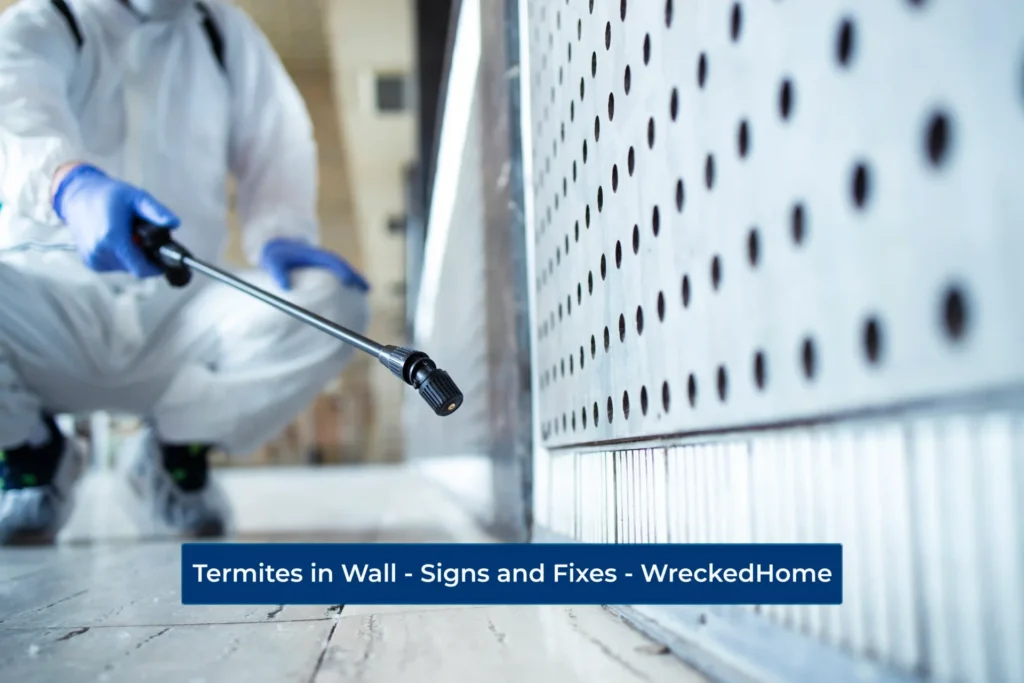
Termitcides are chemicals used to get rid of termites. These are either repellents or non-repellents. Repellent termicides create protective barriers that deter termite entry. On the other hand, non-repellents are undetectable to termites and unknowingly disrupt their colony.
Get benefit of nematodes
Nematodes are widely used biological control agents to eradicate termites and give best eco-friendly results with no side effects. In this control method, microscopic nematodes enter termites’ body and release bacteria in their gut.
These bacteria multiply rapidly and eventually cause death of termites within 48 hours. After elimination, nematodes reproduce within deceased termites and are ready to hunt other termites. This cycle continues until your place is free from termites. In this way you get rid of termites without using any harmful pesticides.
Call a Professional
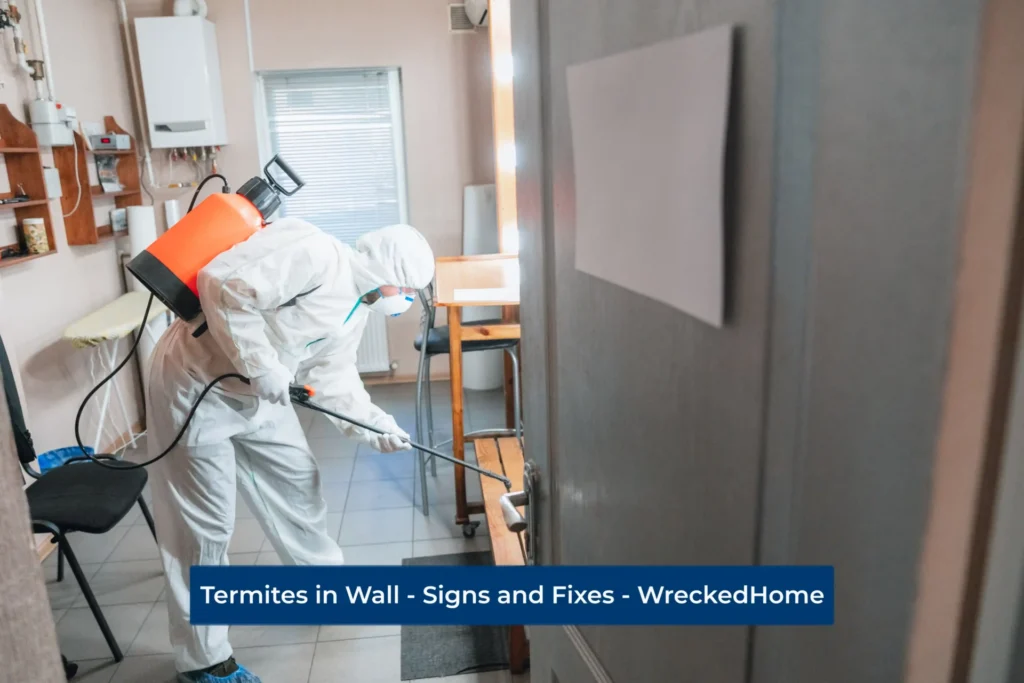
If you have tried all possible ways to fix the termite problem at your place, but nothing worked, then it is time to call a professional.
Termite control professionals have a strategic approach to identify, target and eliminate termite infestation. They first inspect the site thoroughly and use different treatment options. After treatment, pest control professionals keep monitoring the property to ensure no further sign of pests. This will not only make your space free of termites but also help to deter in the future.
Conclusion – Termites in Wall
Termites in wall are devastating. They colonize silently and make the foundation hollow. In the worst conditions, your foundation can collapse. But, you don’t have to make this happen and keep an eye on the signs early on. Then, work on the solutions to get them off as soon as possible so your property is safe.
For any repairs, installations, builds, or questions; We recommend you to hire a professional. Find A Pro Near You Here!

